by Susan Dean | Feb 6, 2018 | Animals, Ocean Animals
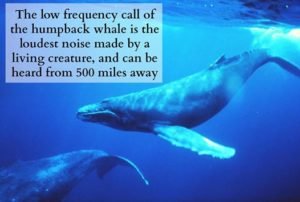
Whales and dolphins are mammals and cannot breathe water but must come up for air. There are about 80 species. Whales are the largest and most intelligent animals in the sea. They live everywhere. Dolphins are a kind of small whale and even live in some rivers There are two types of whales:
1. Baleen whales – like the rorqual, gray, right, pygmy (bristles)
2. Toothed whales like the sperm, beaked, narwhal, beluga, dolphin, porpoise and they have from a few teeth to many.
Whales have sleek streamlined blubbery bodies, oily skin, two flippers, a HORIZONTAL tail and tail flukes. Fish have vertical tails. BREACHING is when they jump out of the water. SPYHOPPING is looking out of the water. Sometimes whales will hold their tail up and sail in the wind for fun.
Baby whales are born under the water tail first and are called calves. The mother gives birth near the waters surface and she lifts them out of the water so they can breathe. The baby feeds from teats in slits on the mother’s belly. The milk has lots of fat. Baby whales stay with the mother for 2-3 years. Pods are fixed family groups. There are schools, pods and nursery groups. Pairs of male bottlenose dolphins are known to stay together for 15 years. Toothed whales may live in groups of as many as 500.
Sperm whales have the largest head of any animal and have dark wrinkled skin
Belugas are smooth and white. They have callosites and lice on their skin. Blue whales are the largest whales – longer than 3 busses and weigh as much as 25 elephants. The humpback whale has the longest flippers – 16 ½ inches long. Baleen whales have 2 blowholes side by side. Toothed whales have 1 blowhole. The single breath from a blue whale can blow up 2000 balloons.
Some whales can go as fast as 35 mph. They chase each other in a dance. Southern right whales are slow swimmers and float to the surface if killed.
The porpoises are the smallest whales. There are tales of dolphins saving people from sharks
Whales have 4 senses = sight, touch, taste, and hearing. They hear by detecting vibration through a small opening behind the eye. Their eyes have a constant trickle of oily tears to wash away dirt; they see well. They can even see in dim light. Their eye reflects the light back. Whales have touch sensitive skin. They use sound to hunt food, find their way and communicate with each other through echolocation. Sperm whales have an oily wax in their heads they use for weight and echolocation. The humpback whales make groans, moans, trills, chirps and a love song. The longest heard lasted for 22 hours.
Whales travel long distances for food (warm water), to mate, or to give birth (cold water). The gray whales migrate the longest and are the most curious. Whales find their way with the help of the magnetic forces of the earth. Toothed whales usually don’t migrate, but belugas do.
Whales used to be hunted for their blubber, meat, and oil but they are endangered and hunting them is banned now.
The Rorqual whales are the longest, the loudest, and the heaviest. Blue whales have folds of skin. Their throat grooves unfold to eat. Their tail flukes are 26 feet wide, and their heart is the size of a small car. Humpbacks have shorted fatter bodies and longer flippers. They use bubble netting to catch fish. They circle beneath a school of fish blowing bubbles, then swim through the bubble net trap and gulp down a mouth full of fish. The gray whales roll over on sides and suck up water and mud for food. The bowhead whale (a right whale) lives the longest, 130 years.
by Susan Dean | Feb 6, 2018 | Animals, Ocean Animals
The amazing sawfish
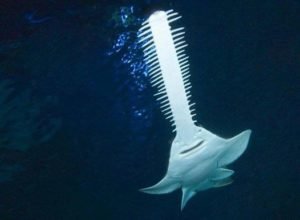
LINK: THE FIRST WARM BLOODED FISH DISCOVERED
Fish are coldblooded water animals with a backbone and skeleton. They migrate, have gills, teeth, and no eyelids, lay eggs, and swim in schools.
European eel have the longest migration of 4,660 miles
Fish may have headlights, be round or flat, have both eyes on one side of head, and generate electricity! Their scales are a thin layer of skin that secretes slime and get larger with age.
The mudskipper breathes air. The lungfish breathes in or out of the water and is the last link between land and sea.
There are 2 classes of fish:
1. Cartilaginous such as sharks, rays, and mantas. They have no air bladder
2. Those with Bony Skeletons and air bladders. These are true fish.
There There are many strange and beautiful fish in the ocean. Many of them we eat. Some fish live in both fresh and salt water such as the sturgeon, salmon, and eels.
There are jawless fish such as the blind hagfish and lampreys with rasp-like teeth. They have no bones, fins, or nervous system. They are suckers.
Some odd fish:
The parrotfish sleeps in a cocoon of mucus.
The porcupine fish fills with water and blows up.
The archerfish shoots pellets of water and the anglerfish actually fishes with a light.
The cleaner wrasse grooms other fish.
Stickelbacks build nests and live where the river meets the ocean.
Flying fish have four wings and actually glide.
The barracuda feeds by sight not smell.
The butterfly fish has an eyespot.
The male cardinal fish carries the eggs around in its mouth.
A seahorse male carries the young.
Flounders are flat as a pancake and have 2 eyes on one side of their body.
The drum makes a drumming sound and toadfish squeak.
The hatchet fish have binocular eyes.
The viperfish has needlelike fangs and rows of lights along its body.
Cuttlefish are the camouflage champions and produce an ink.
The wrasse changes sex.
The dragon fish has poison fins.
Sharks have a cartilaginous skeleton and are living garbage cans with 2 rows of teeth. Bluefin tuna have ferocious feeding frenzies.
Eels spawn in the Sargasso Sea. The ocean sunfish can lay 300 million eggs and is the bulkiest bony fish.
The electric eel can generate 600 volts of electricity.
The largest living animal, a mammal, is the blue whale – 33.5 miles long and 160 tons.
The biggest fish is the whale shark measuring 50 feet long and weighing 3 tons. The largest recorded fish is a whale shark 18 miles long and weighing 43 tons. The blue fin tuna reaches 14 feet and 1 ton. The smallest fish is the goby ½ “ long.
The stonefish is the most poisonous. The tuna is a fast swimmer and maintains its body heat. A sailfish is faster than a cheeta at 68.18 mph. A cheeta’s speed is 63mph, a marlin 57.6mph and a wahoo is 48.5 mph .
The mermaids purse or devils pocketbook is the egg case of a skate. The tan chains of little round pockets we find on the beach are the egg cases of welks. Open one. You may find some tiny baby welks inside! My students love to open them and see the tiny shells.
These animals are not fish , but the cuttlefish is a mollusk, the starfish is an echinoderm, and dolphins and whales are mammals.
You can find a variety of ocean animal replicas for children to examine or you might examine a real fish and then do a “gyotaku” or fish print. Add some goldfish in a tank after you do the program and let the children watch the, draw them and learn to care for them. The department of natural resources has a chart of freshwater fish and one of saltwater fish. Sometimes I talk about their teeth and the fact that fish always get new teeth if they lose any, but we are diphyodonts and will only have 2 sets of teeth. If kids are older I will give them a sharks tooth.
Red Lipped Batfish
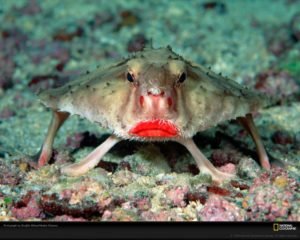
Puffer Fish

PUFFER FISH CIRCLES

Underwater Crop Circles-The unexpected artist of this sand circle was found to be a tiny male puffer fish. It spent days and nights to make the circle using only a flapping fin to attract a mate. After completing the circle the fish actually decorated it with broken pieces of shells.
The ugliest animal in the world is the blobfish. Endangered and…squishy, this deep sea creature lives in waters off the coast of Australia.
BLOBFISH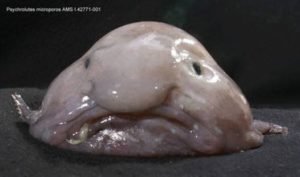
by Susan Dean | Feb 6, 2018 | Animals, Ocean Animals

A Starfish Story
A businessman was on vacation, walking along the beach, and saw a young boy.
All along the shore were starfish that had washed up from the tide, and were likely to die in the hot sun.
The boy walked along the shore and reached down here and there to pick up a starfish and toss it back into the ocean.
The businessman, so accustomed to efficiency, walked up to the boy to tell him about his nonsensical ways.
”I’ve noticed what you’ve been doing, son. You have a warm heart and I know you mean well, but there’s so many starfish dying on beaches all over the world. I’m sure you could do something better with your time. Do you really think this is going to make a difference?”
The boy glanced up at the man, and looked down at a starfish by his feet. He picked up the beautiful starfish and tossed it back into the ocean, and said, “It made a difference to that one”.
Adapted from “The Star Thrower” by Loren Eiseley (1907 – 1977)
ECHINODERMS “Spiny-skinned Animals”
Five family members: starfish, brittle stars, sea urchins, sea cucumbers, and sea lilies.
They are found in every sea from below tidal zone to great depths, have 5 divisions to body, radial symmetry, tube feet moved by a water vascular system. Some feet have suction cups. No relatives outside of the ocean. Most have stalked pincers and movable spines.
Sea Stars (Starfish) are the most voracious predators on the ocean floor. Most sea stars can extrude their stomach. A sea star smothers a snail by wrapping its extruded stomach around it or it can pull bivalves apart with its arms. The sun sea star (14 inches wide) is cannibalistic (eating other sea stars.) Sea stars usually have 5 points and an eyespot sensitive to light at the tip of each arm. The sieve (madrepore) is a round spot on the top of the starfish and sieves water going into the water vascular system controlling the tube feet. Sea stars travel on tube feet and some can swim. They cling to rocks or bury themselves in the sand. If a sea star loses an arm it grows back and the lost arm will grow another starfish. Some starfish have no anus. What’s left from food is expelled from their stomach. Mud stars (3-4 inches wide) are a favorite of mine and look like star cookies – almost pentagonal with large marginal plates. They bury themselves in mud beyond the tidal zone.
The reticulated sea star is the largest sea star (12-16 inches) on the Atlantic coast. The central disc is high and divides the surface into triangles.
The sunflower sea star is the largest of the starfish (2 feet across) and may have 21-24 rays. It begins life with 6 rays, grows and sheds arms constantly, and is the worst enemy of the moon snail. Other kinds of sea stars include the long armed snake star, basket star, and blood sea star. Brittle-stars (serpent stars) are fragile secretive animals with long arm plates heavily spined and attached to a central disc.
Sea urchins and sand-dollars may be 2-4 inches across, may have tube feet with sucking disc, usually found in shallow waters, and spines may be short, long, sharp, dull, thick, slender or fluted. They have plates that form a rigid globular or disk-like body covered with moveable spines.
The black sea urchin has spines 12-15 inches long covered with mucous poisonous to the touch and are found in shallow water among rocks and corals from Florida South.
The common sea urchin is found off the Atlantic coast. It decorates itself with debris and shells for protection and is found in low water to 30 feet. The rock boring sea urchin is found off the Atlantic coast in shallow water in mud flats. It is elliptical, 2 inches in diameter with spines ¾ inch long. Sand-dollars have spines and tube feet and may be oval, raised in the center, or round and thin (2-5 inches long/up to 5 inches wide). The cake urchin, cake-dollar, keyhole urchin, and heart urchin are found off the Atlantic coast
Sea-cucumbers live in shallow water, have leathery skin, tube feet scattered or in rows, and radial symmetry. One kind breathes with the tube feet on top and travels with those on the bottom. They are highly changeable in shape with definite front and rear ends. They may be smooth or warty and if roughly handled, may eject their innards. They may be 6-12 inches long and 3-4 inches thick. They eat decaying and small living organisms.. The mouth has branched contractile tentacles.
Sea lilies and Feather Stars are ancient animals. Except for the sea lilies and feather stars, most crinoids are extinct and we know them as fossils. They live in very deep water. Sea lilies are stalked and attached to the sea floor and feather stars are mobile.
Activities: Kids examine a collection of sea stars and look at pictures of sea stars. Create sea stars from clay, or paint them in a watercolor ocean with other sea life and continue the discussion..
Mud Star
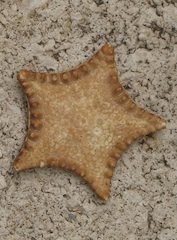
Red Star
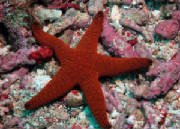
MADRIPORE

by Susan Dean | Feb 6, 2018 | Animals, Ocean Animals

Water, the Ocean, and Sea Life
Lets start with Water:
One oxygen atom and 2 hydrogen atoms join together to make a molecule of water. Oxygen has 8 protons, 8 electrons, and 8 neutrons, has a weight of 16 and makes up 8/9ths of the weight of water. Oxygen makes up 1/5th of the volume of our atmosphere. Hydrogen is the most plentiful element in the universe, has the lightest weight of 1, and is the simplest composition for an atom.
The simplest atom is the force of unimaginable magnitude in comparison to size. Hydrogen has the lightest weight of 1, the greatest specific heat, and is the most sociable element. Hydrogen loves carbon and oxygen! We have two elements that are gases at all temperatures on earth that combine to produce the only inorganic liquid on earth. It is the bearer of life and begets all organic liquids.
Water is an inorganic compound and the molecule has the shape of Mickey Mouse. It is called “The Mickey Mouse Molecule”. It is the most sociable element, next to hydrogen, and the most abundant. Water is the only element on earth present in all three states: solid, liquid, and gas (water, ice, fog). Ice is the strangest of all solids because water expands when it freezes and everything else contrasts except bismuth. There are about 7 kinds of ice that depend upon pressure to form. As pressure increases, the freezing point is lowered. Ask students what other liquids do we find naturally occurring (blood, honey, milk, tree sap, nectar, oil, mercury, tears, perspiration).
Earth is called “The Blue Planet” or “The Water Planet”. Water is the main composition of all living things. Its properties are strange, rare, and unique and it blankets 3/4ths of the surface of the earth. Life wilts and shrivels up without it!
97% of all the water in the world is in the oceans and is salty.
2% of water is ice
1% of water is “fresh” water and available to drink and use.
42% of fresh water goes for agriculture
39% to power and electric
11% home and office
8% manufacturing, and mining
At 32 degrees water freezes and forms a hexagonal crystal having six sides as topaz and quartz crystals. When frozen water floats on itself. Sound travels four times faster in water than in air. Water can dissolve or erode away a rock. Water takes up space as we see in the forms of oceans bigger than continents, icebergs as big as cities and clouds as big as the sky. Rain, snow, hail, fog, dew, steam, hot springs, geysers, rivers, ponds, puddles, and streams are all water. Bodies of water may vary in color according to the content.
We are nothing without water! We can only go about 3 days without any water. Grains, seeds, and nuts can live the longest without water because they have water sealed inside. It has an enormous power to absorb and store heat Water is the universal solvent and always the bearer of other substances.
Water is colorless, odorless, and tasteless and has weight, force, and pressure. We see its force in tidal waves, hurricanes, and floods. We know the pressure of water from its weight every time we carry a gallon of water (or milk). We love the many flavors of water to drink!
Water is the carver of the surface of the earth. . Heat from our sun drives the water cycle that carves the face of the earth. The Grange Canyon is the most significant carving by water.
Bodies of water:
Dead Sea in Palestine is the lowest body of water at 1300 feet below sea level.
Lake Titicaca is the highest body of water in the Andes Mts.
Red Sea has no rivers of any size and is surrounded by desserts.
Caspian Sea is the largest body of water with no outlet and covers 163,800 sq. miles.
Lake Baikal in Siberia is the deepest at 5,712 feet deep.
Lake Superior is the largest body of water covering a 31,820 sq. mile area.
The Nile is the longest river traveling 4,000 miles.
The Mississippi runs 3900 miles as does The Amazon but the Amazon is broader and carries more water.
The water table is the line below which the ground is saturated. Water flows downhill but pressure causes it to rise. Pressure underground causes underground water to form geysers, artesian wells, and hot springs but most water leaves the ground through springs or rivers.
The Oceans
The ocean is home for the majority of life. It is life’s primeval sea and it moderates climates and temperatures. Water has an enormous power to absorb and store heat. All life is conditioned by water.
Ocean water is salty. Salt is produced by evaporation of seawater or brine from other sources, such as brine wells and salt lakes, and by mining rock salt, called halite. Salt is the solid crystal halite and, a crystalline mineral composed primarily of sodium chloride, NaCl. It is essential for animal life in small quantities but is harmful to animals and plants in excess. It had been used in the past to preserve food, as money, and it is a nucleus for ice crystals or raindrops. It is created from water running off of the land. Salt water can be colder than ice or it can be 500 degrees hot near thermal vents.
Eighty percent of our oceans surface is in the southern hemisphere. The surface of the ocean is not flat but has but it bulges over mountains and dips over trenches below. The ocean bottom is mostly sand, silt, and mud. Mountain ranges and plateaus rise from the ocean floor. We have been able to map the ocean floor using sound waves. Europe and N. America move 1 inch further away from each other in a year. The Pacific Ocean is growing smaller, and the Red Sea is growing larger.
There are three segments to the ocean floor:
1. Shelf to 600 feet
2. Slope to 12,000 feet ( at the base is the continental rise)
3. The floor or the deep ocean
Ocean currents are like rivers flowing in the ocean. Ocean currents have an effect on climate and weather. The ocean itself doesn’t have a climate as such. Tides, currents, waves, temperature, salt, light, and depth affect life in the ocean. The temperature in the ocean varies little but 1-10 degrees. On land the temperature can vary from 40 to 100 degrees.
The Pacific Ocean – the largest and deepest ocean (14,000 feet) with a “Pacific Ring of Fire” (volcanoes) below. It has twice the water of the Atlantic. There are two gyres (two different surface currents circling) in the Pacific Ocean. Other oceans only have 0ne surface current.
The Atlantic Ocean – has an average depth of 11,000 feet. A ridge (The Mid-Atlantic Ridge) curves like a snake through the Atlantic Ocean. The ridge has a huge trench and is the birthplace of the floor of the Atlantic. At fracture zones earthquakes and volcanoes are common. The Puerto Rico Trench is the deepest at 30,000 feet deep. In the mid-North Atlantic is the Sargasso Sea where eels meet manatees, sea turtles, whales, and sharks.
The Arctic Ocean has an average depth of 3,000 feet. It is small, cold and like a shallow bowl. Arctic summers are always day and winters dark. In 1906 a ship took 3 years to cross the Arctic looking for a shorted path to the new world.
The Gulf Stream current is 50 miles wide, flows warm at 5 miles an hour. Deepwater currents are moving masses of cold water. Every ten years the ocean currents shift for two years. The water increases temperature and sea levels rise 20 inches. The cause is unknown.
In the two hemispheres of the earth, water moves circling in opposite directions. In the Northern Hemisphere it circles clockwise. In the southern it circles counterclockwise.
Ocean water swells crash into waves that wash up on the beach then roll back underneath. They can be gentle and calm or violent and destructive. Waves may be caused by wind, the upheaval of the ocean bottom, an earthquake, or a submarine. Waves are seldom more than 25 feet high but in storm may reach 60 feet. The motion of the wave can be circular or elliptical. A wave can have a spray that reaches 200 feet and the force of a wave can reach 3 tons per square foot. A tsunami is a tidal wall 100 feet tall usually caused from an earthquake.
Ocean tides rise and fall upon the shore. The earth’s spin creates traveling bulges and our moon pulls the along. There may be one or two high and low tides. The moon’s gravitational pull, supplemented by the sun, affects the tides of the oceans on earth. The average tide is 2 ½ feet high. Inland seas for all purposes are tideless. Vast energy is exerted by tides. This movement is a necessary condition for life. Stagnation is the forerunner of death.
Ocean Levels:
1. Sunlit – to 650 feet
2. Twilight – to 3000 feet –Life feeds on droppings from above.
3. Midnight Zone – to 13,000 feet – animals have developed bioluminescence.
4. Abyss to 20,000 feet
5. Hadal Zone – 20,000 plus
Ocean Organisms swim, float, attach themselves and become stationary, crawl, hitchhike, bore holes,
There are 3 groups of life in the ocean.:
1. Plankton – All forms that drift with the currents.
2. Nekton – Free swimming organisms
3. Benthos – those attached to or that crawl on the sea floor
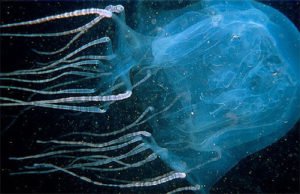
In the ocean we find animals that:
1. Can generate 220 volts
2. Regenerate parts of their body
3. Squirt ink
4. Shoot acid
5. Multiply by mitosis
6. Have several rows of teeth
7. Have eight arms
8. Produce light
9. Dress like a lion
10. Change colors and patterns
11. Change sexes
12. Have tentacles with shooting barbs that sting
13. Animals that are stationary (attached to something)
Ocean animal facts:
1. The largest fish (whale shark)
2. The largest animal is the blue whale. The blue whale, Balaenoptera musculus, is the largest known animal ever to have lived on sea or land. Individuals can reach more than 110 feet and weigh nearly 200 tons
3. The largest bird is a sea bird – the albatross with a wingspan up to 12 feet.
4. The Tern is a small seabird that flies the farthest – 25,000 miles from pole to pole.
5. Some animals in the ocean look very different at different stages of life (polyps, medusa, jellyfish)
6. Some animals make sounds (the whales song, drumming fish, or squeaking toadfish)
7. Most ocean animals breathe water but the lungfish can breathe on land or water.
8. A flying fish can glide 150 feet.
9. The rare dugong related to the manatee lives in the Indian Ocean.
10. The giant squid is 65 feet long.
11. Chemosynthetic bacteria live at hydrothermal vents
12. The cuttlefish is an invertebrate with no brain to speak of and invented jet propulsion.
13. The oarfish, Regalecus glesne, is the longest bony fish in the world. With its snakelike body sporting a magnificent red fin along its 50-foot length, horse like face and blue gills, it accounts for many sea-serpent sightings.
14. Green turtles can migrate more than 1,400 miles to lay their eggs
15. Blue fin tuna are among the largest and fastest marine fish.
16. Penguins “fly” underwater at up to 25 miles per hour
17. Horseshoe crabs have existed in essentially the same form for the past 135 million years.
18. A scallop has thirty-five eyes, all of which are blue
19. The giant squid, once considered a myth, is the largest creature without a backbone. It grows up to fifty-five feet across and weighs up to 5,000 pounds.
Giant squid have the largest eyes. Their eyes are sixteen times wider than human eyes, or more than a foot in diameter.
20. Sea horses are probably best known for their roles as father, as one of the
only species of animal where the male becomes pregnant and gives birth.
Female sea horses insert their eggs into the male’s pouch where they are
fertilized and held until they hatch
21. An octopus has 3 hearts and its blood is light blue. They are completely deaf.
22. The octopus and starfish can grow new limbs.
23. The leatherback turtle is the largest sea turtle at 6.5 feet long and 1500lbs.
24. The box jellyfish kills more people each year than any other sea animal. Its sting can kill in 3 minutes.
25. Crabs teeth are in their stomach.
26. The most primitive fish-like animals are those with sucking mouths, such as lampreys and hagfishes, whose evolution stopped short of the development of biting jaws.
27. The smallest fish is the tiny goby, an inhabitant of fresh-to-brackish-water lakes in Luzon, Philippines. It seldom is longer than a half inch at adulthood.
Out of the 33 phyla or groups of animals, one is found only on land, 16 are found only in water, and 16 found on land and in the ocean. Of the 7 species of sea turtles, 5 are endangered.
Plants in the ocean are seaweeds attached to the ocean floor like kelp. Some are tiny green plants that swim around and many forms of sea life feed on ocean meadows of life called plankton (microscopic plants and animals). The most familiar are diatoms. Most continents and islands are fringed with seaweed
Rare Arctic Ribbon Seal
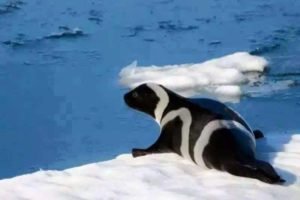
The Carolina hammerhead
Scientists have discovered a new species of shark in the ocean off South Carolina and have named it for the region where it was found. Thought to reach 11 feet long and weigh about 400 pounds, the shark has been identified cruising the waters at Bull’s Bay north of Charleston, St. Helena Sound near Beaufort and in the Charleston harbor. Biologists suspect these hammerheads occur worldwide, since evidence of them has been found in the past from Brazil to the Indian Ocean. The number of Carolina hammerheads is thought to be small. It’s almost impossible to tell the difference between a Carolina hammerhead and the well-known scalloped hammerhead – except for one major distinction: the newly identified species has fewer vertebrae than its shark cousins. Carolina hammerheads have 83 to 91 vertebrae, while scalloped hammerheads have 92 to 99 vertebrae. Carolina and scalloped hammerheads are the second largest sharks found in Palmetto State waters, behind the great hammerhead. The sharks are distinguished by their wide, anvil-like heads.
Cuttlefish
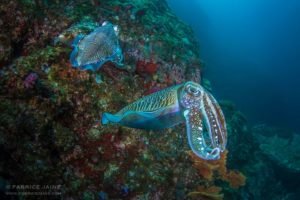
A drop of sea water magnified 25 times by David-liittschwager

THE HARLEQUIN SHRIMP

THE POM POM CRAB

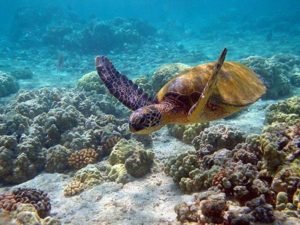
The mouth and esophagus of the leatherback turtle are a perfect example of how an animal can become adapted to its diet and habitat. When the turtle consumes jellyfish (and it must eat many, as jellyfish have low nutritional value), the esophagus stores both the jellyfish and the seawater that have been swallowed. However, to prevent the stomach filling with water, the seawater must be expelled. So how does this happen?
The answer lies in the backwards-pointing spikes you see in the mouth of the turtle, which continue down the esophagus and grow progressively larger. As the muscles of the esophagus squeeze the seawater out, the spines keep the jellyfish in place. Once all the water has been expelled the jellyfish are then passed into the stomach. This strange adaptation is one of many that have kept this magnificent species in existence for 90 million years.
More information on the leatherback sea turtle: http://on.natgeo.com/bdf17q Edit: yes, that is blood around its mouth. This animal washed up on shore dead and was dissected for the educational television show “inside natures giants”.
Hatchet fish

Hatchetfish are deep-sea fish found in the Pacific, Atlantic, and Indian oceans. What this fish lacks in good looks, it makes up for in ingenuity. It uses a form of bioillumination to mimic light intensity from the surface, effectively cloaking it from poor-sighted predators.
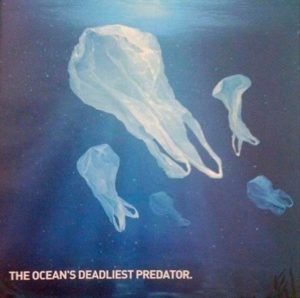
Piglet Squid
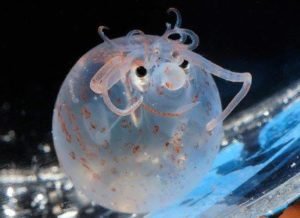
PREGNANT SEAHORSES
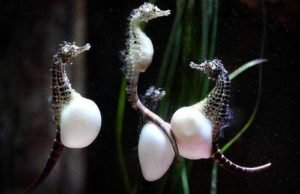
BABY STING RAYS
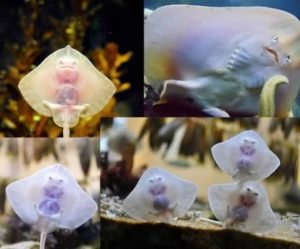

This is my collection from a Pacific Ocean beach near Santa Barbara. The colors are beautiful and if you look closely you can see the small air bladders on some of the plants.
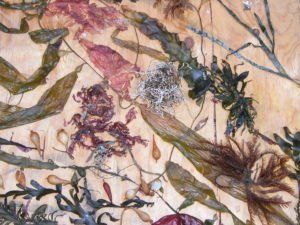
BIOLUMINESCENT PHYTOPLANKTON IN AUSTRALIA
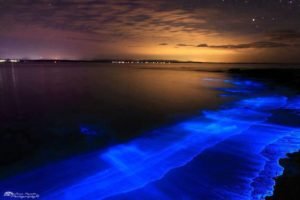
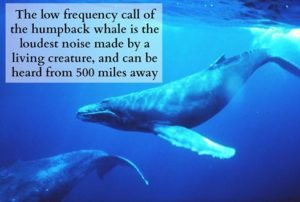
Papakōlea Beach is a green sand beach located near South Point, in the Kaʻū district of the island of Hawaiʻi. One of only four green sand beaches in the World, the others being Talofofo Beach, Guam, Punta Cormorant on Floreana Island in the Galapagos Islands, and Hornindalsvatnet, Norway. It gets its distinctive coloring from the mineral olivine, found in the enclosing cinder cone.

green sand
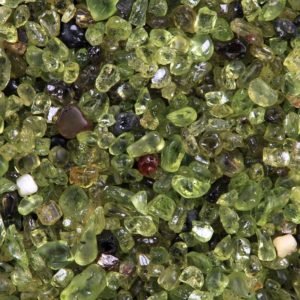
GLASS BEACH FORT BRAGG, CA.
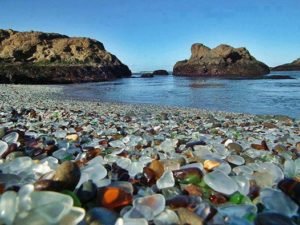

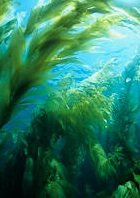
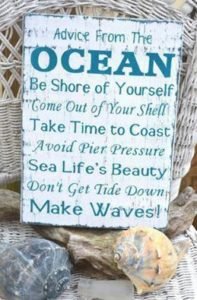

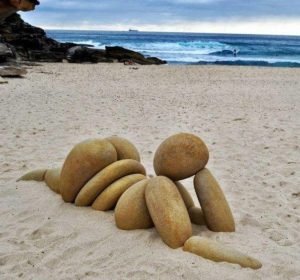
by Susan Dean | Feb 6, 2018 | Animals, Ocean Animals
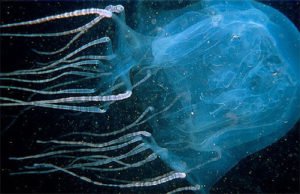
Some animals in the ocean are more dangerous than others. Some of them either bite, are giant, can sting, have venomous spines or sharp spines, and some have knifelike teeth or a grip that they maintain until death.
Some animals that are intimidating for their size or have painful bites are:
• The giant grouper or sea bass can be 12 feet long and weighs 500 pounds.
• The giant manta can be 20 feet long and weigh 3500 pounds.
• You could get caught between the giant clams valves.
• We are all familiar with the sharp teeth of a shark and their attacks.
• The giant barracuda is 6-8 feet long and has enormous knifelike teeth.
• The killer whale will attack anything that swims.
• Sea lions will nip divers when they are breeding
• The giant moray eels have teeth and can bite.
Some animals can inflict painful stings, have sharp edges or fire nematocysts (little poisonous harpoon-like structures on tentacles in their skin) such as we find in Coelenterates:
• Hydroids like the Portuguese man of War, jellyfish and sea anemones make terrible stings
• Corals and oysters have knife sharp edges
• In the class of mollusks there are gastropods that sting and puncture such as the stinging snails and slugs or other univalve mollusks like the cone that punctures when
it stings.
• Other mollusks that are cephalopods can sting. The giant octopus, can be 25 feet long and has a venomous bite. Others like the squid, nautilus, and cuttlefish can also sting.
• Some annelids or sea worms can bite or sting like the bristle worm.
• Sea urchins (Echinoderms) can sting. This spiny animal has large needle sharp spines that can break off in wounds and some spines are venomous.
Venomous Marine Vertebrates:
• The spiny dogfish shark is the most abundant shark and has a dorsal fin that is mildly poisonous.
• Stingrays can give a venomous tail sting.
• The weaver fish has cheek spines and the 1st dorsal fins and gills are poisonous.
• The scorpion fish has needle sharp fins that sting.
• The surgeonfish had poisonous spines.
• The toadfish may bite and it has hollow spines with glands that inject venom.
• The elephant fish and the rat fish have dorsal fins that sting.
• The catfish is a ray finned fish and has barbed cats whiskers and sharp spines and swim in corkscrew turns inflicting a mildly toxic wound.









































